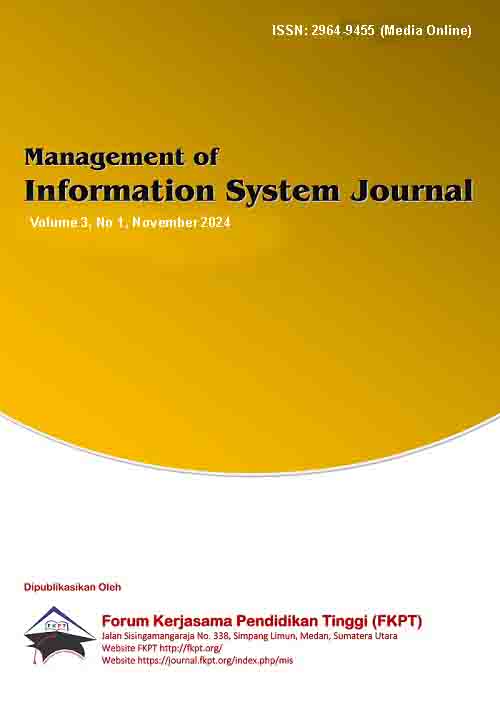Combination of Sequitur and Leveinstein Algorithms for Text File Compression
Abstract
Data is one of the main things in computer science engineering (ICT) problems, data can mean a situation, image, sound, letter, number, mathematics, language or other symbols. Facts that often occur about data are the need for storage capacity and the need for Data transfer time, which is a case that must be observed in this requirement, is caused by the increasing amount of data that must be stored in RAM memory. Based on the results of the tests carried out: Files compressed by the sequitur algorithm make it easier to use the internet so that the time required will be shorter and the possibility of download and upload jobs failing will be smaller. Then transferring files over the network will be faster, the delivery time depends on whether the provider is fast or not and the size of the file to be sent and helps in reducing the size of the file so that it can reduce the storage capacity of a memory / RAM.
A text file is a collection of various related information in text form, text files originating from documents, letters, numbers and symbols will be compressed with a sequitur algorithm. The need for large storage capacity seems increasingly important. This need is caused by the increasing amount of data stored over time, especially for the business and banking world. These companies generally need very large capacity to store all important data and files.
The Leveinstein algorithm is a development of the sequitur algorithm, where a file approximates the difference between a string and the source string. The difference value between strings is expressed as the edit distance value. In contrast to the Leveintein algorithm which works on a character-by-character basis, the sequitur algorithm operates by enforcing uniqueness diagram constraints and usability rules.
References
(2010). In E. Jubilee, Rahasia Manajemen File (p. 144). Indonesia: Elex Media Komputindo.
Marimin. (2004). Teknik Dan Aplikasi Pengambilan Keputusan Kriteria Majemuk. Jakarta, Indonesia: Grasindo.
(2016). In M. Muslihudin, Oktafianto, & A. Pramesta (Ed.), Analisa Dan Perancangan Sistem Informasi Menggunakan Model Terstruktur Dan UML. Yogyakarta, Indonesia: Andi.
(2015). In H. Nugroho, Matematika Diskrit Dan Implementasinya Dalam Dunia Teknologi Informasi. Yogyakarta, Indonesia: deepublish.
Nurdam, N. (2014). Sequence Diagram Sebagai Perkakas Perancangan Antarmuka Pemakai. Ultimatics , VI (2085-4552), 21-25.
Putra, D. (2010). In D. Putra, & Westriningsih (Ed.), Pengolahan Citra Digital. Yogyakarta, Indonesia: Andi.
(2010). In D. Salomon, & G. Motta, Handbook Of Data Compression. New York, Amerika: Springer London Dordrecht.
Sulistyorini, P. (2009). Pemodelan Visual Dengan Menggunakan UML Dan Rational Noise. Jurnal Tekhnik Informasi Dinamika , XIV (0854-9524), 23-29.
Suryasari, Callista, A., & Sari, J. (2012). Rancangan Aplikasi Customer Service Pada PT. Lancar Makmur Besama. Jurnal Sistem Informasi (JSI) , IV (2085-1588), 468-476.
(2004). In F. Wahid, Dasar-Dasar Algoritma Dan Pemrograman. Yogyakarta, Indonesia: Andi.
Wedianto, A., Sari, H. L., & H, Y. S. (2016). Analisa Perbandingan Metode Filter Gaussian, Mean Dan Median Terhadap Reduksi Noise. Media Infotama , XII, 21-30.
Wibowo, H. R. (2014). Buku Pintar VB.Net. Jakarta, Indonesia: Elex Media Komputindo.
Copyright (c) 2024 Muhammad Hasan

This work is licensed under a Creative Commons Attribution 4.0 International License.






